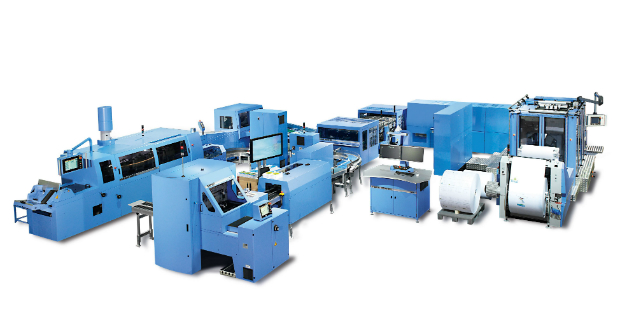Finishing specialist Müller Martini has backed digital workflow as the trend it will promote at this year’s drupa show. Bruno Müller, chief executive of the Müller Martini Group, says the company’s Finishing 4.0 system covers the parallel management of processes and process data as well as the connectivity of its machines and systems. He says, “We provide our customers from the graphic arts industry with a contact-free, digital workflow by which they can significantly increase their productivity and flexibility. This is our response to the structural change in the graphic arts industry, which will proceed much faster than we all expected.”

Expanding finishing into digital: Bruno Müller, chief executive of the Müller Martini Group
He describes Finishing 4.0 as the “key factor” in the company’s strategy. He says, “Digital printing, individualisation and the short runs involved therein are essential drivers that offer chances for our customers and for us as machine manufacturers. We develop flexible, highly automated solutions that enable printing companies and bookbinding companies to satisfy the changing customer demands fast, at favourable cost and in high quality.” He also sees potential in bookbinding. He says, “The average age of the equipment in the market exist probably more than 15 years. This shows that in itself enormous efficiency potential in the bookbinding companies. We prepare the mechanics of our machines for automation in order to make use of them. Our customers need solutions with which they can manage job changes without any manual intervention. “We are well on our way to getting to grips with the material flow and the products in such a way that setting operations aren`t needed any longer at the beginning of a job. The machines are able to run and execute different jobs immediately one after the other. While this is easy on the data side, it requires every machine to find the right setting for the individual job automatically and with absolute reliability. In addition, the machines must be able to process different basic materials. This is only possible through the integration of accurate sensor and actuator technologies. The company sees a demand for high-performance machine configurations even though it has had to cope with a deep slump in this segment. Müller says, “The customers use their equipment for a longer time, above all since they can no longer expect productivity increases from new investments due to the high technological level. Nevertheless, this remains one of our important segments – due to the business done with service operations, because they can also be done successfully with shorter runs and because, here too, there is a trend towards more flexibility and individualisation to which Müller Martini offers answers.” He sees the web to print trend continuing. He says, “There are numerous products that are created in the digital environment and are then printed – just look at the large segment of mass customisation. Customers can design their products online and then get exactly this unique item. There are many digital services leading to print products that were unimaginable a few years ago. Already now, in the tourism industry, for instance, travel brochures are specially tailored to the journeys of customers – and printed. Training material, too, is individualised and printed because memorisation is better when it is paper-based. We will definitely see a lot of this media mix.” He predicts that many of the machines bought in recent years will continue to run for a number of years. He says, “There will be just a few, very professional large printing companies, which produce everything fully automatically. In addition, there will be many small, innovative suppliers specialising in specific user groups, services and technologies. All in all, the volume of print production will be smaller, but printing will be more selective, with added value and more sustainable. “Printing technology will make a crucial contribution to ensuring that information can be transferred efficiently and economically to the respective target group. The structural change is irreversible. It offers all sorts of chances – and we are determined to make use of them.”


